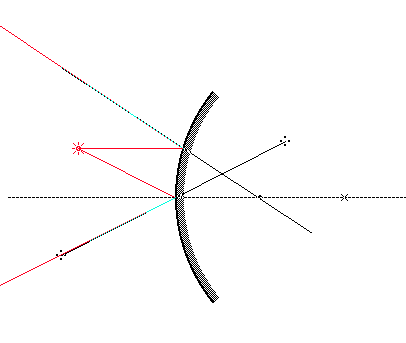Overview:
The goal of this lab is to examine the focusing properties of
spherical mirrors and to play with the mirage toy. We will also use
the Ray tracing program to understand how convex and concave mirrors
work. Some output showing ray-tracing for convex
and concave mirrors is included here.
More information in Note 3 on Mirrors [ note3.pdf
]. You can also find a matrix calculation for the mirage toy as
one of the examples in this note [note4.pdf].
There is a fascinating toy called the mirage toy which consists of two parabolic mirrors which fit one on top of the other. The top mirror has a hole in it and if place an object on the bottom mirror you see its image floating in the hole. It looks so real you feel that you can actually pick it up. The photo shows the image of a toy turtle - the object is at the bottom.
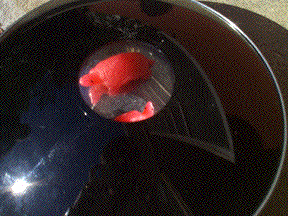
Goal of this Experiment:
Understand how the mirage toy works - at the quantitative level:
Here is a simulation of the mirage toy using the Ray program. I created three identical mirrors and used the rotation two to orient two of them so as to leave a hole. Three rays are shown. It is also obvious from this how the image of the object is inverted.
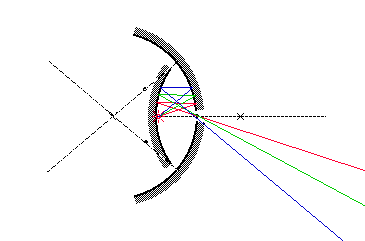
The figure below shows a parabola and a circle plotted on the same
axes.
This particular circle has a radius R = 2 and is centered at (x,y) =
(2,0)
and the parabola has its focus at (x,y) = (1,0). The equations:
![]() (circle)
(circle)
For some other radius R we would have f = R/2 and:
![]() (circle)
(circle)
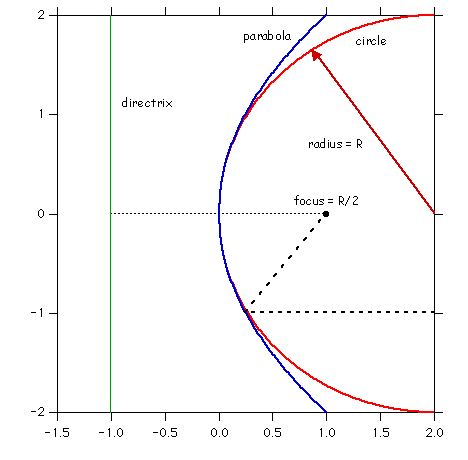
Concave mirror
When an object is between the focal point and mirror, the mirror magnifies the object - the image is virtual and upright. When the object is beyond the focal point, the image is real and inverted. Note that we need only to plot two rays from the top of the obeject - a parallel ray to the mirror and a ray to where the axis of the mirror intersects the surface of the mirror. In the former case the reflected ray or the extension of the reflected ray passes through the focus. In the latter case the reflected ray comes off at angle symmetric about the axis.
Note, in the pictures below, X on the axis of the mirror marks the center of the circle of radius R and the dot indicates the focal point at R/2. These figures are screen images grabbed from the Ray program.
Concave mirror - object between mirror and focal point.
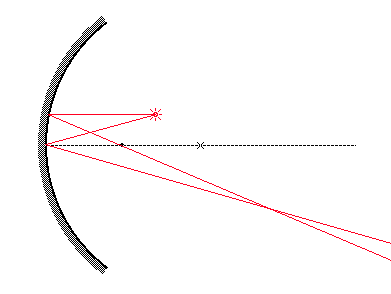
Concave mirror - object beyond focal point.
Convex mirror
The image of the object in a convex mirror is virtual, upright and smaller.
